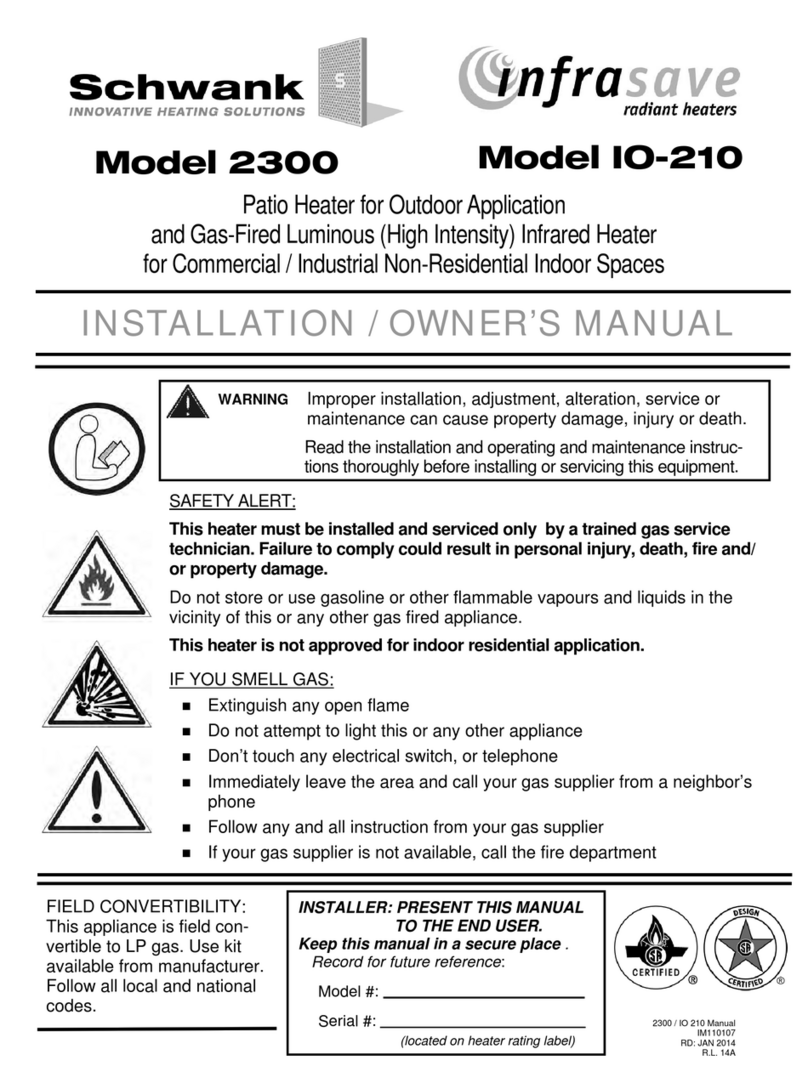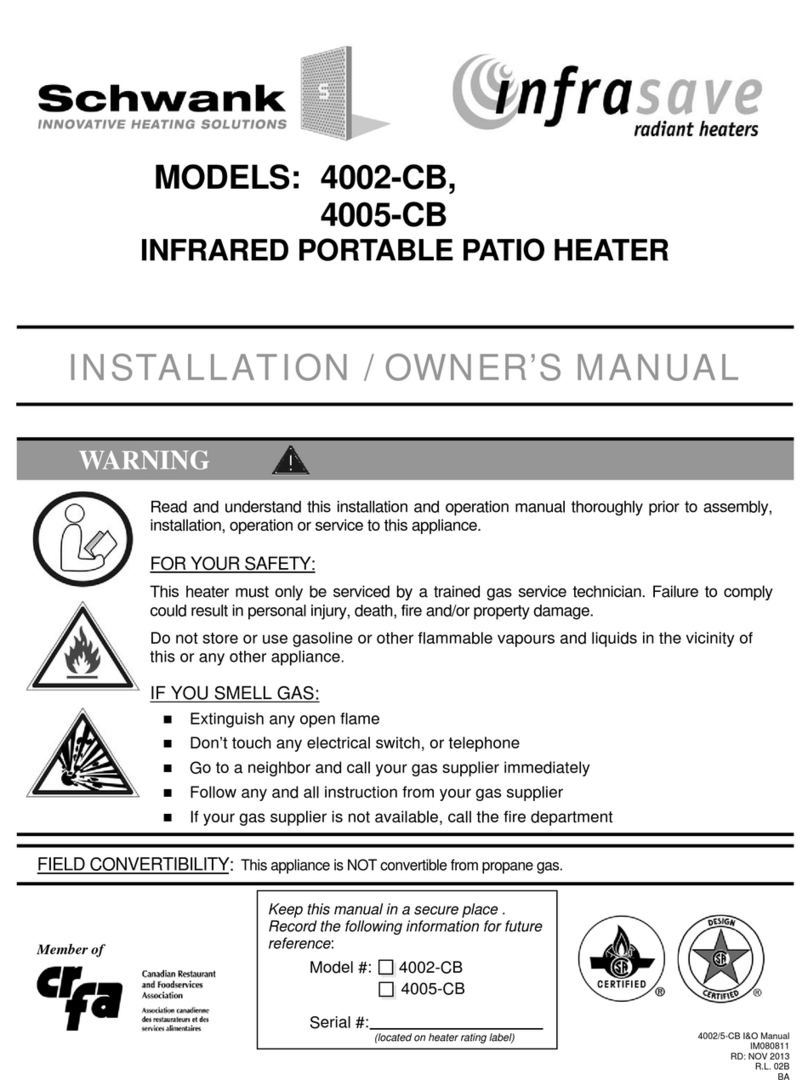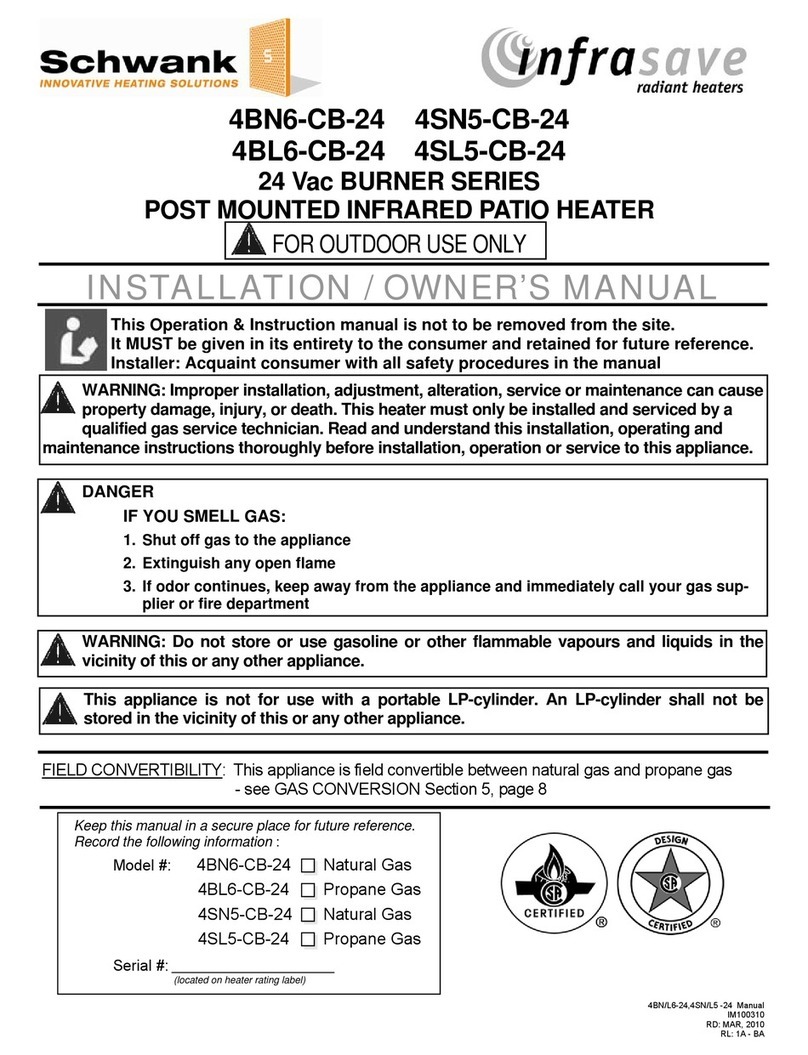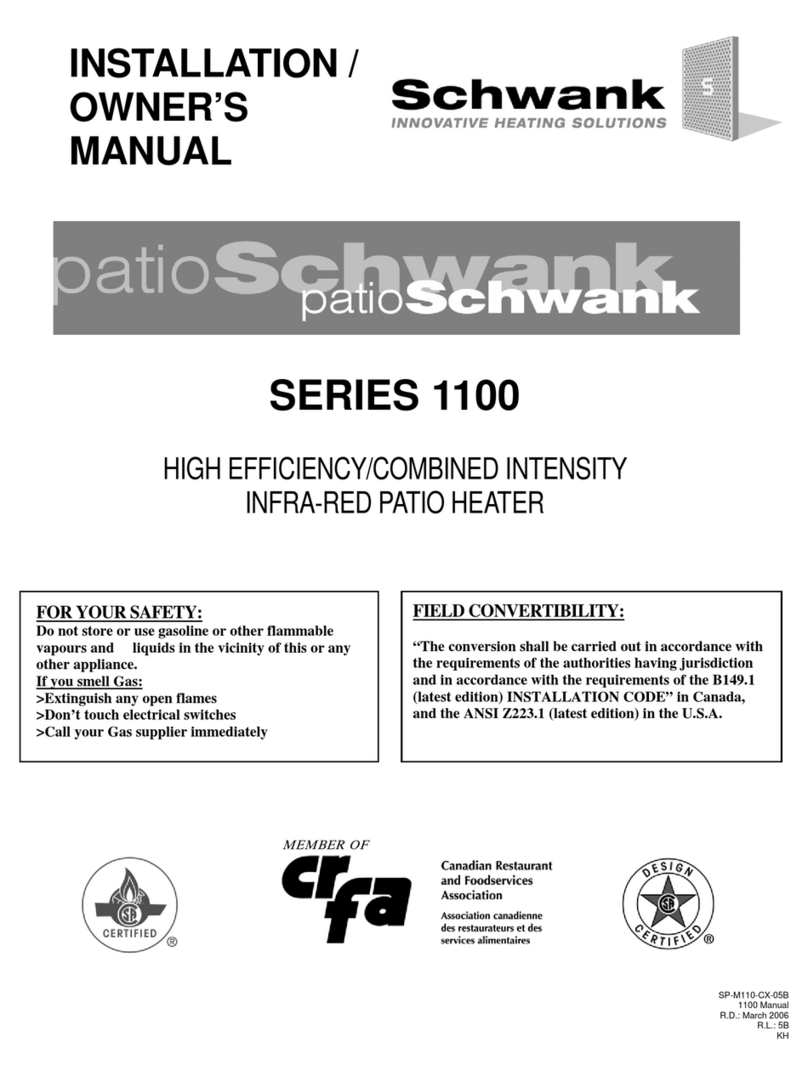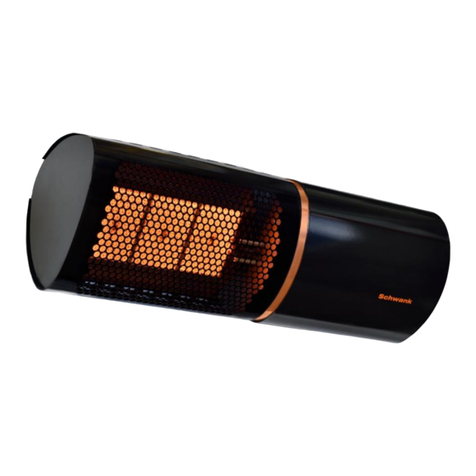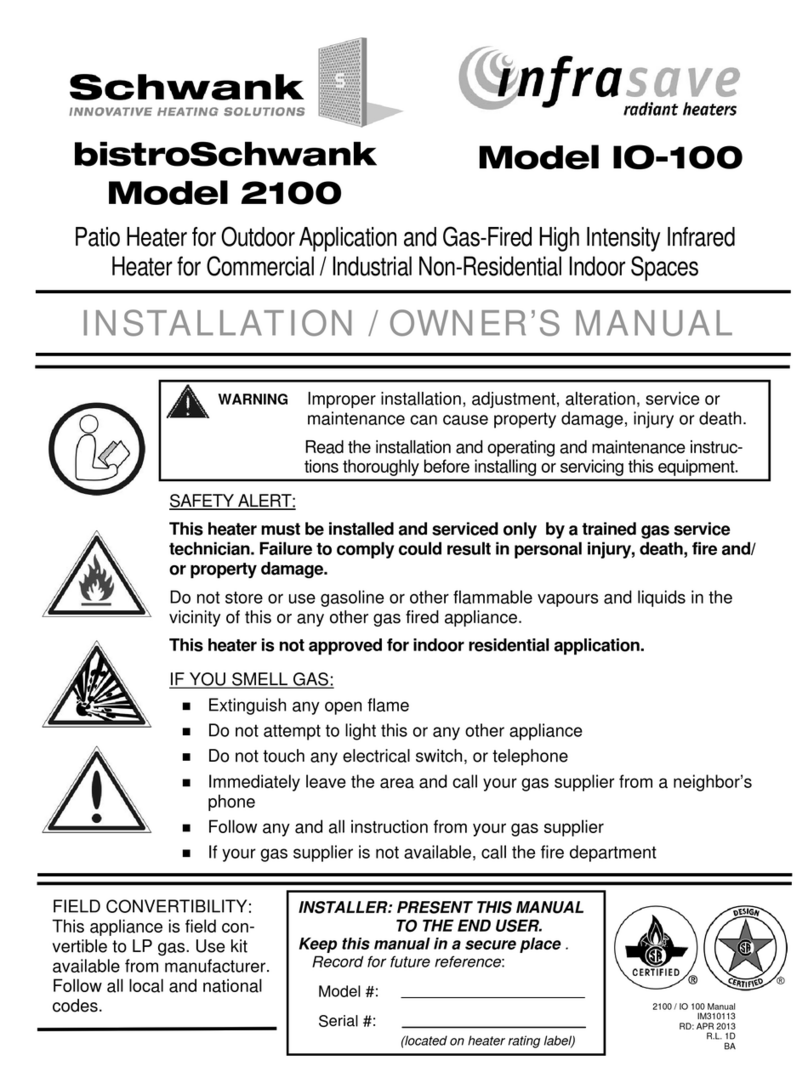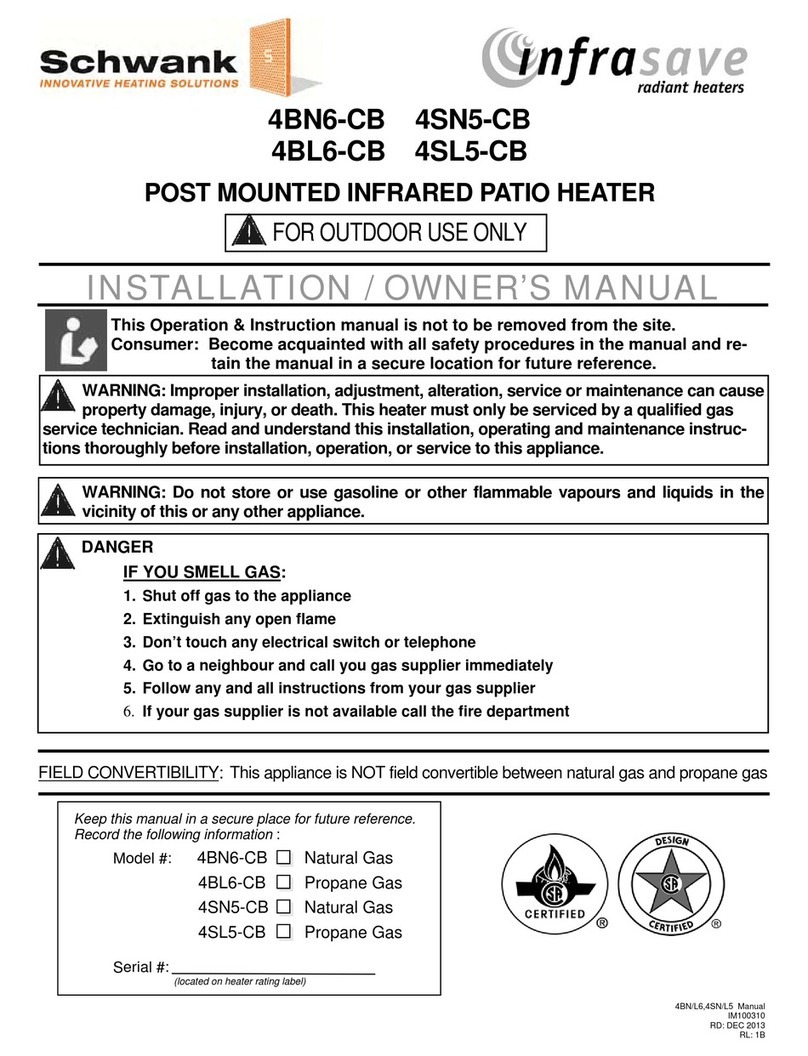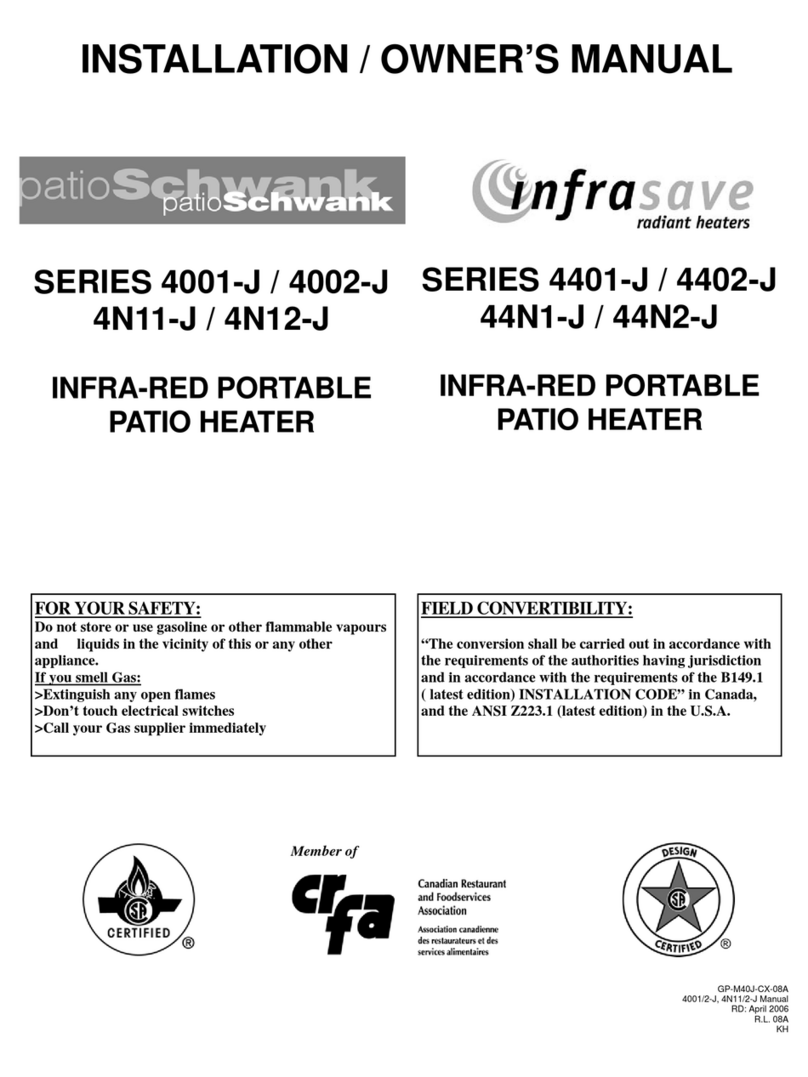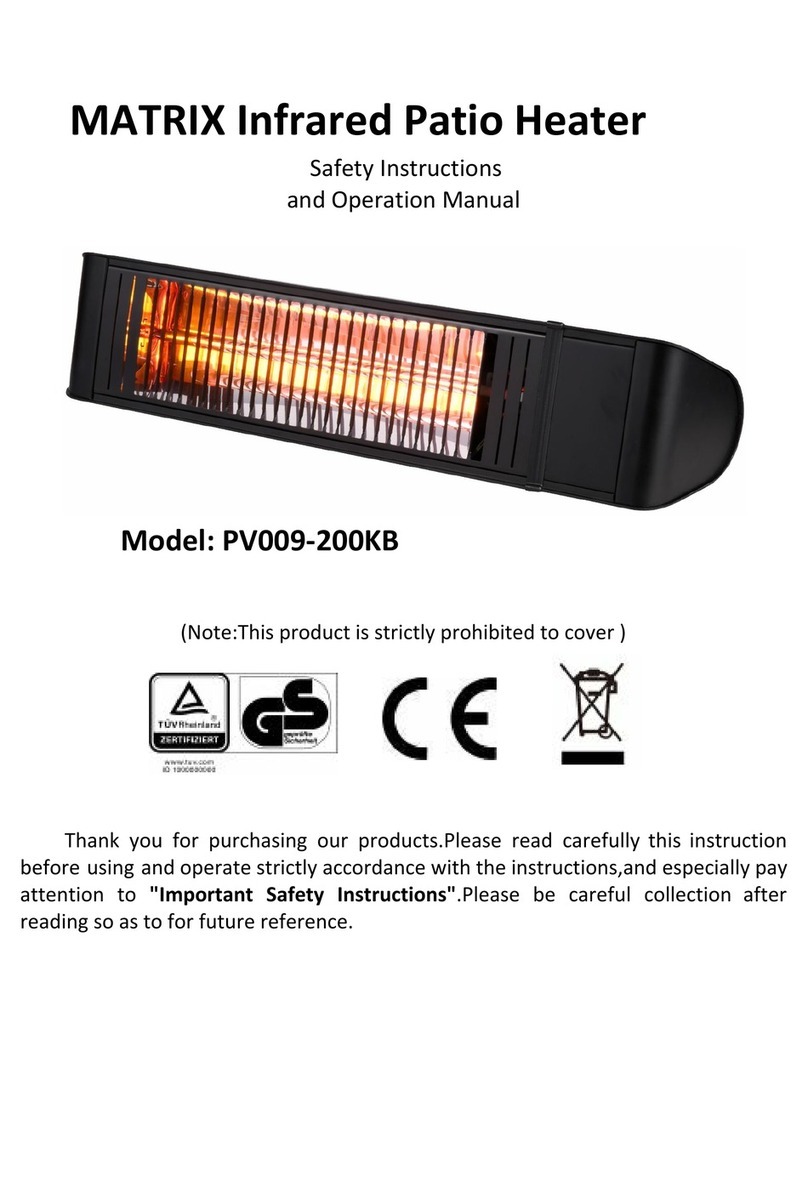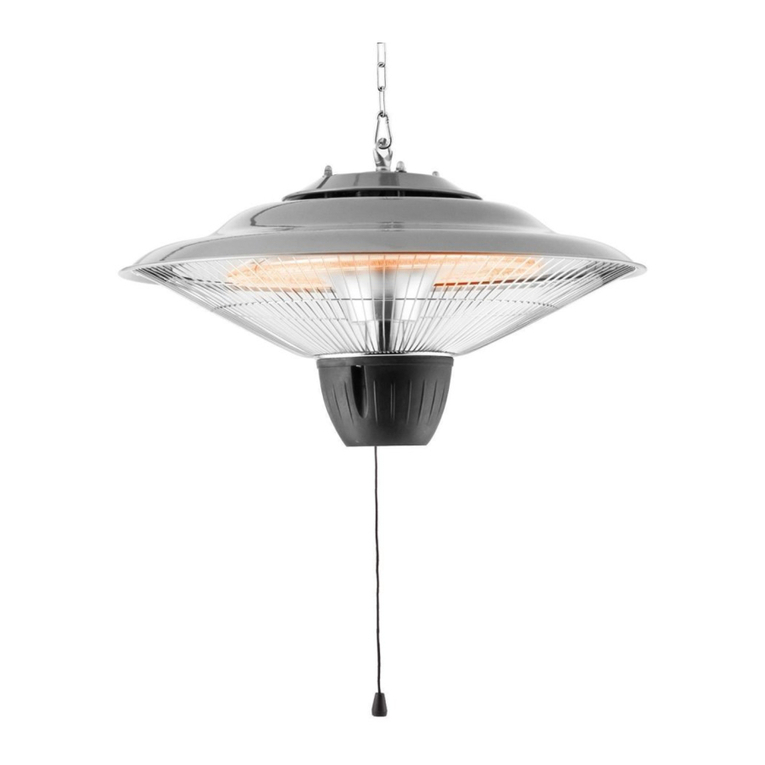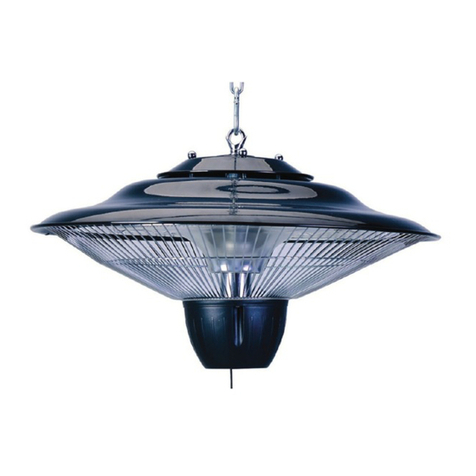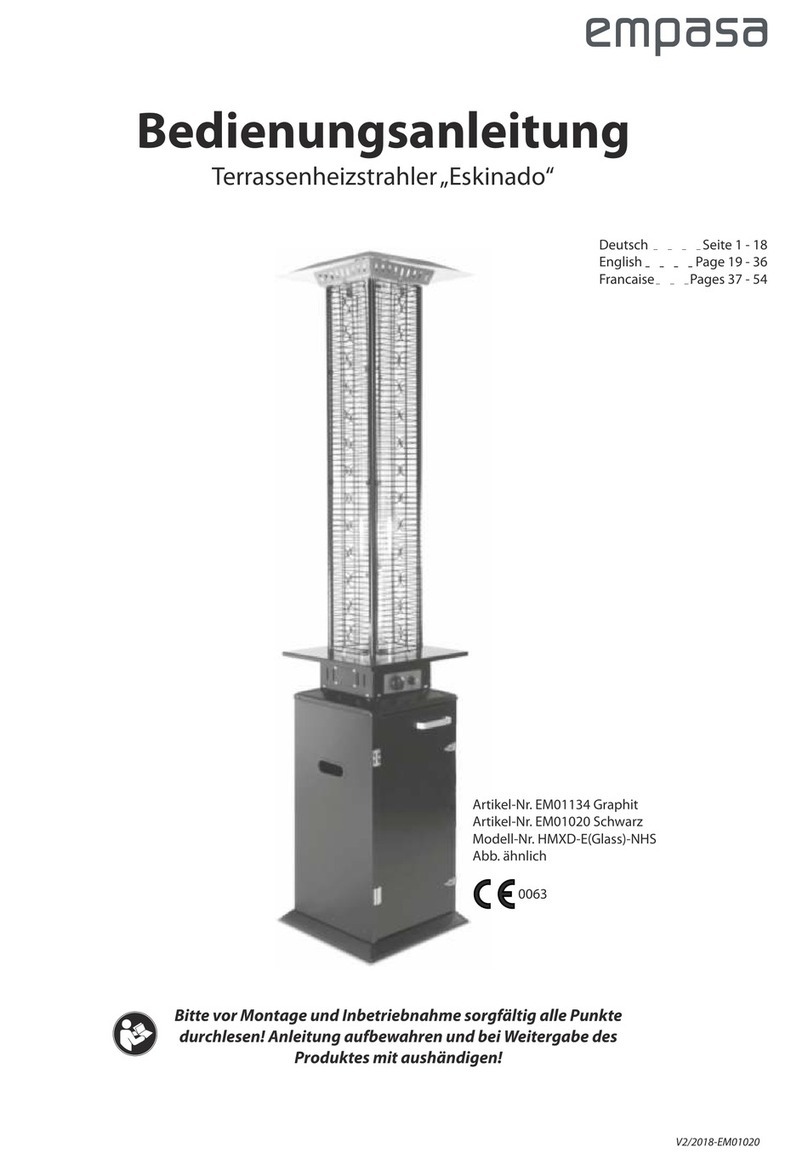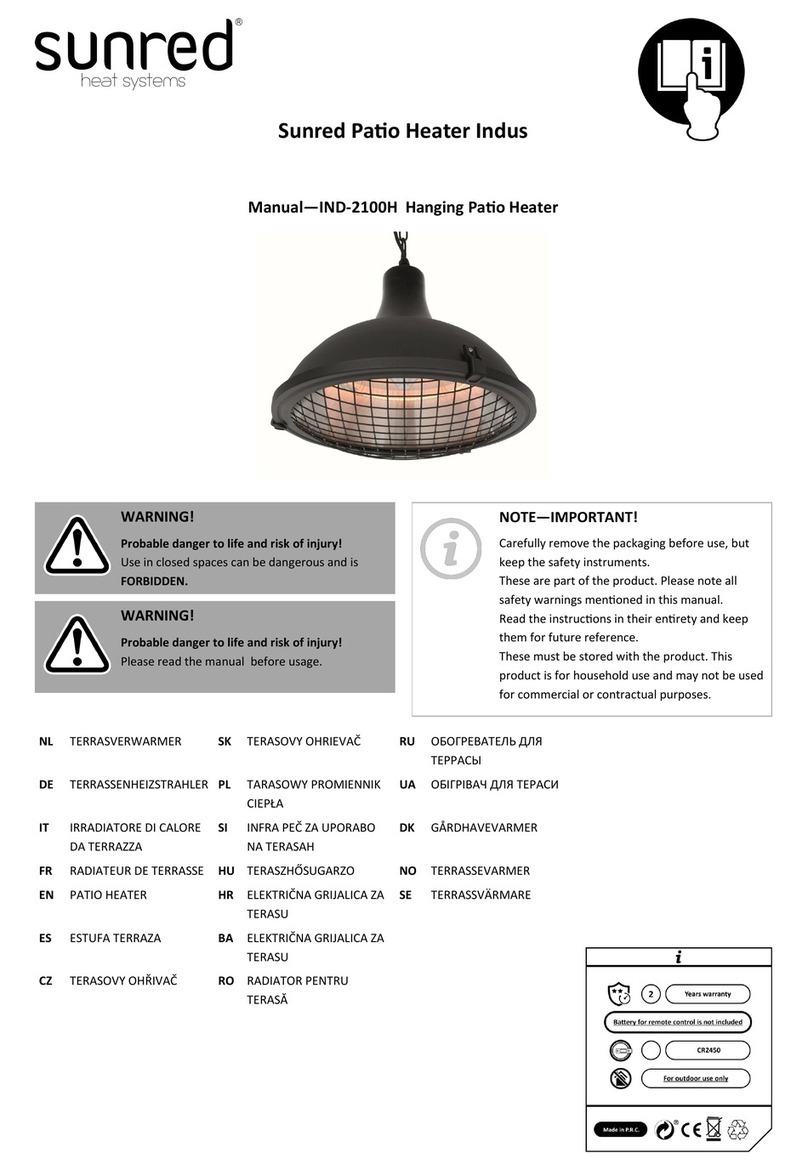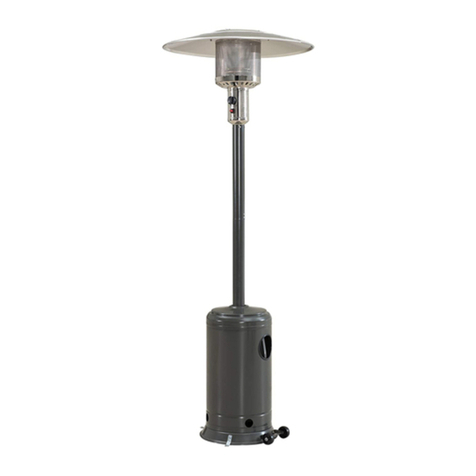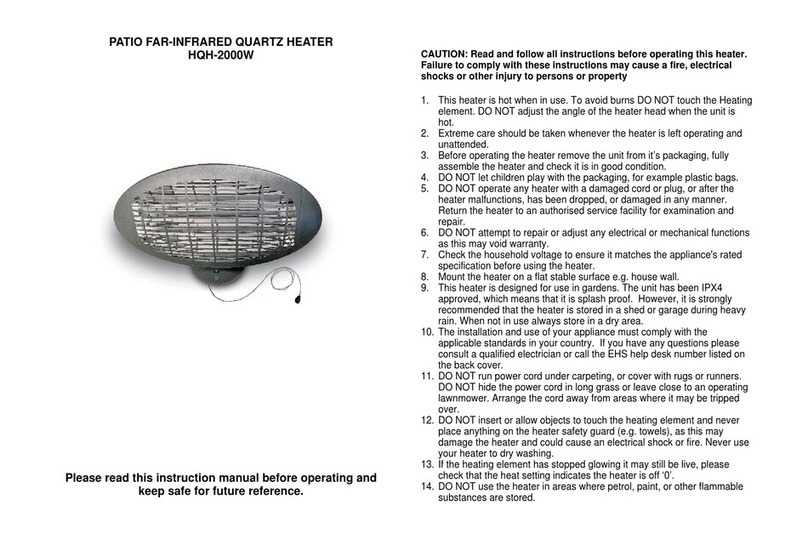
2300 / IO 210 Manual
IM091231
RD: DEC 2009
R.L. 11B
BA
1. GENERAL
2. INSTALLATION REQUIREMENTS
2.1 MOUNTING CLEARANCES
Series 2300 / IO 210 Heaters must be mounted with minimum clearances as shown in Section 8.4. It
should also be located with respect to building construction and equipment so as to provide sufficient
clearance and accessibility for servicing and cleaning of burners and ignition control. Minimum mounting
height is to be no less than 96”. Do not store or place anything directly underneath heater
2.2 HEATER MOUNTING
IMPORTANT:For either horizontal or angle mounting, the long axis of the heater must be level. Use
only non-combustible mounting hardware. Diagram 2 on Page 5 illustrates typical suspension hardware
that may be used., and provided by Schwank as an optional component.
2.3 GAS SUPPLY LINE INSTALLATION
All piping must be installed according to local codes.
An approved flexible connector between the heater and gas piping must be installed. The same is
available as an option from Schwank.
A drip-pocket at the inlet connection must be provided.
On propane-fired units, a main line filter is recommended.
Piping joint compounds must be resistant to the action of liquefied petroleum gases.
All piping joints should be tested for leaks with a soap and water solution.
Page 1
Series 2300 / IO 210 Heaters are approved for both horizontal and angle mounting. Schwank recom-
mends a maximum 30° mounting angle in most applications - if the short axis is rotated to an angle ex-
ceeding 30°; a large portion of infrared heat may be directed above the heads of seated occupants in
many applications. Refer to Diagram 8. Improper angle mounting can result in damage to the heater or
unsafe operation, and will void warranty.
The gas fired infra-red combined intensity heaters are suitable to be installed for heating of outdoor and
non residential indoor spaces. These installation instructions are intended for the Series 2300 / IO 210
Heaters.
All installations must conform to the following:, all local and national code requirements including the
current CAN/CGA-B149.1 installation code for gas burning appliances and equipment as well as the Ca-
nadian Electrical Code PART 1 CSAC22.1 (latest edition) must be observed. All installations in the
U.S.A. must conform to local and national code requirements including, National Fuel Gas code ANSI
Z223.1, and the National Electrical Code ANSI/NFPA No 70 (latest edition). Due to ever changing stan-
dards and requirements, revision to equipment and installation procedures may be necessary. In case
of discrepancies, the latest installation manual will take priority.
This heater is designed and certified for use on outdoor patio’s in accordance with ANSI stan-
dards CAN1-2.17-M91 & CSA 5.90 (5th ed.) U.S.
Schwank Group warrants that the heater will operate as designed in mild wind conditions up to
10 MPH. Note this unit is not designed to operate in adverse weather conditions including higher
wind speeds exceeding the certification requirement of 10 MPH.
